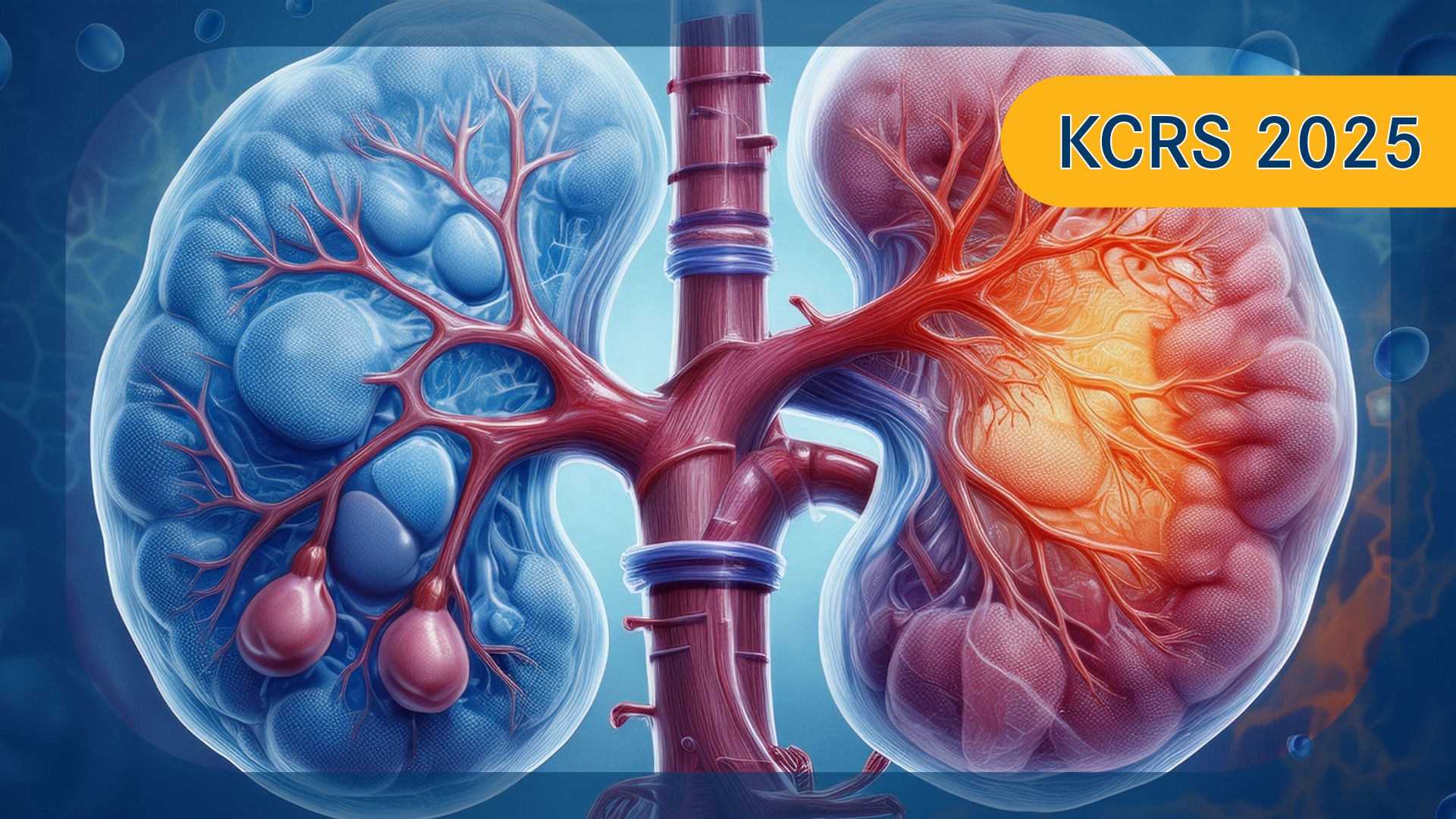Advanced RCC | Image by
Ashling Wahner & MJH Life Sciences Using AI
Although the time spent with grade 3/4 toxicity before disease progression (TOX) was numerically longer with belzutifan (Welireg) vs everolimus (Afinitor) among patients with advanced renal cell carcinoma (RCC), belzutifan yielded a clinically meaningful and statistically significant improvement in quality-adjusted survival time, according to results from a quality-adjusted time without symptoms or toxicity (Q-TWiST) analysis of the phase 3 LITESPARK-005 trial (NCT04195750).1
Findings from the main analysis, which were presented at the 2025 Kidney Cancer Research Summit, showed that the mean Q-TWiST was 17.47 months among patients who received belzutifan (n = 374) vs 14.81 months among those who received everolimus (n = 372; difference, 2.66; 95% CI, 1.06-4.49). The relative gain in Q-TWiST with belzutifan, defined as the absolute Q-TWiST difference divided by mean overall survival (OS) for the everolimus arm, was 11.32% (range, 4.49%-19.09%) in the main analysis.
The sensitivity analysis, which included grade 1 to 4 serious AEs, showed a mean Q-TWiST of 17.50 months in the belzutifan arm vs 15.03 months in the everolimus arm (difference, 2.47; 95% CI, 0.81-4.28). Data highlighted a relative Q-TWiST gain of 10.50% (range, 3.44%-18.18%) in the sensitivity analysis.
“In conclusion, belzutifan outperformed everolimus from a response and a progression-free-survival [PFS] perspective. The toxicity profile was distinct, the quality of life was better, and so was the TWiST and the Q-TWiST analysis,” lead study investigator, Thomas Powles, MBBS, MCRP, MD, stated in the presentation.1 “This [Q-TWiST analysis] does help patients and doctors make decisions. I quite like this type of exploratory analysis, and I’m happy to be involved in future projects with it.”
Powles is a professor of genitourinary oncology, lead for Solid Tumor Research, and director of Barts Cancer Institute at St. Bartholomew’s Hospital, Queen Mary University of London.
As part of this analysis, investigators divided patient survival time following randomization into 3 mutually exclusive states: investigator-assessed time with grade 3/4 adverse effects (AEs) before disease progression, time without symptoms and progression of grade 3/4 toxicity (TWiST), and time from progression until death (REL). Investigators calculated Q-TWiST as the sum-product of restricted mean time spent in the individual states and state-specific utility weights. Additionally, standard utility weights used in literature—1 for TWiST as well as 0.5 for TOX and REL—were considered, and threshold utility analysis was performed to determine the impact of the differing health state utility.
The study authors summarized the treatment effects as differences in restricted mean time spent in each state; the difference in Q-TWiST; and the relative gain in Q-TWiST, or the absolute Q-TWiST difference divided by mean OS in the everolimus arm. Use of nonparametric bootstrapping method was involved for generating 95% confidence intervals for the treatment differences related to the health states and Q-TWiST.
In the multicenter, open-label phase 3 LITESPARK-005 trial, patients were randomly assigned 1:1 to receive belzutifan at 120 mg or everolimus at 10 mg orally once daily until progressive disease or unacceptable toxicity.2
The trial’s dual primary end points were PFS based on blinded independent central review (BICR) per RECIST v1.1 criteria and OS. Secondary end points included the objective response rate per RECIST v1.1 guidelines, duration of response, and safety.
Patients 18 years and older with stage IV clear cell RCC, a Karnofsky performance status of 70 or higher, and at least 1 measurable lesion per RECIST v1.1 guidelines, and disease progression after prior treatment with a PD-(L)1 inhibitor and a VEGFR tyrosine kinase inhibitor were eligible for enrollment on the trial. Having 3 or fewer prior lines of systemic therapy were required for study entry.
In the main analysis, the mean TOX time was 1.45 months in the belzutifan arm vs 1.22 months in the everolimus arm (difference, 0.23; 95% CI, –0.29 to 0.76). Despite a numerically longer time in TOX among those in the belzutifan arm, data showed significantly longer time in TWiST with belzutifan at a mean of 10.73 months vs 6.07 months with everolimus, which was driven by prolonged periods without progression (difference, 4.66 months; 95% CI, 3.28-6.02).
Prior safety data showed that the most common any-grade AEs in the belzutifan and everolimus arms, respectively, included anemia (83.1% vs 57.2%), fatigue (32.3% vs 25.8%), nausea (18.5% vs 12.2%), edema peripheral (17.2% vs 18.1%), and constipation (16.9% vs 8.3%).
References
- Powles T, de Velasco G, Choueiri TK, et al. Quality-adjusted time without symptoms or toxicity (Q-TWiST) analysis of belzutifan versus everolimus in previously treated advanced renal cell carcinoma (RCC): LITESPARK-005 (LS-005). Presented at the 2025 Kidney Cancer Research Summit; July 17-18, 2025; Boston, MA. Abstract 13.
- Choueiri TK, Powles T, Peltola K, et al. LITESPARK-005 Investigators. Belzutifan versus everolimus for advanced renal-cell carcinoma. N Engl J Med. 2024;391(8):710-721. doi:10.1056/NEJMoa2313906.
